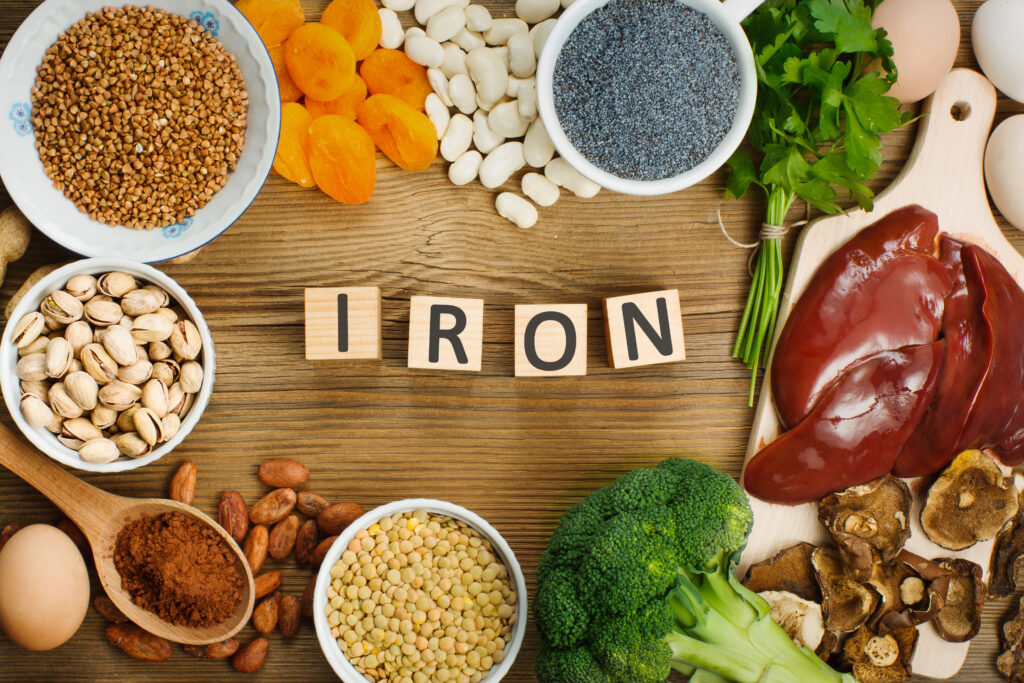
Although iron deficiency is a highly curable issue, about 10 million people in the United States suffer from it. It can impact your activity level, mood, and cognition, making it vital to recognize the signs of the problem.
Iron is a metal that human bodies require for growth and development. Your body relies on iron to create the protein (hemoglobin) in red blood cells that carry oxygen to all areas of the body, as well as myoglobin, which carries oxygen to your muscles.
Iron deficiency can occur due to medical issues, including cancers, as well as blood loss, an iron-deficient diet, and more.
However, one of the most difficult things about iron deficiency is to catch it early because it doesn’t always appear with clear symptoms. So how can you know if you need medical attention? Learn these seven signs you are iron deficient — signs that you may need to contact a medical professional for help with your iron levels.
1. Extreme Fatigue
Being unusually tired is a common sign of iron deficiency. Fatigue occurs because your body doesn’t have enough iron to make hemoglobin, the protein that helps carry oxygen throughout your body.
If you don’t have enough hemoglobin, your muscles and tissues do not get the oxygen they need. This causes them not to have the energy to work correctly. Your heart also has to work harder to get oxygen around the body, making you more tired.
Because most people lead very busy lives, fatigue is not always quickly connected to iron deficiency.
2. Shortness of Breath
It all comes down to the same thing: if you don’t have enough iron in your body, you won’t be able to produce enough hemoglobin to carry oxygen. This means lower oxygen levels, which affect your muscles because they will not receive the appropriate amount to perform normal activities like walking.
Your breathing rate will increase to get more oxygen into your body, causing shortness of breath.
3. Pale Skin
Hemoglobin gives blood its red color, which means that if you have lower levels of it, your blood can look less red. This leads to your skin losing its warm color if you have an iron deficiency significant enough to lower hemoglobin levels.
If the inside of your eyelid is pale, it is a good sign of an iron deficiency. In people with darker skin tones, the inside of the eyelid can be the best way of noticing skin paleness.
The inside of your eyelid should be a rich red color.
4. Noticeable Heartbeats
Noticeable heartbeats, also called palpitations, can also indicate that you are iron deficient. Because you have a lower level of hemoglobin transporting oxygen in your body, your heart has to work much harder to ensure your organs, muscles, and tissues get oxygen.
A heart that has to work harder means a heart that can beat faster than usual, leading you to notice the heartbeats.
If you already have heart problems, iron deficiency can also make them worse, so if you notice changes in your heartbeat, reach out to your doctor as soon as possible.
5. Dry, Damaged Skin and Hair
Because your skin and hair rely on oxygen, having lower hemoglobin levels carrying oxygen can deprive them of what they need to function at their best. Hair and skin that lacks oxygen can become dry and weak.
6. Restless Legs
Recently, scientists have started making a connection between iron deficiency and restless leg syndrome. This syndrome causes a powerful urge to move your legs while you are at rest, leading to problems sleeping.
7. Brittle Nails
Brittle nails that crack or chip easily are a warning of low iron levels. As the deficiency continues, your nails can become spoon-shaped, with the middle of the nail dipping and the edges rising.
Help Your Body Function at Its Best with the Right Iron Levels
Your body needs all the right nutrients, including iron, to function correctly. However, consuming iron is not always as simple as it may appear, especially if you have diet restrictions. And given the risks of iron deficiency, it’s important to prioritize this element.
By learning the seven signs you are iron deficient, you can reach out to your doctor and ask how to better manage your iron levels. Some steps you may need to take include adding more iron-rich foods into your diet, including seafood, beans, and spinach. For some people, taking iron supplements may be easier — just make sure to choose a supplement that contains vitamin C to improve iron absorption.
With proper lifestyle changes and supplements, you can start feeling more like yourself again.
Resource Links
- “Iron Deficiency Anemia: A Common and Curable Disease” via the National Institutes of Health
- “The influence of iron deficiency on the functioning of skeletal muscles: experimental evidence and clinical implications” via Wiley Online Library
- “Iron Deficiency Anemia” via the National Institutes of Health
- “Anemia and Iron Deficiency in Heart Failure” via the American Heart Association
- “Iron and Restless Legs Syndrome: Treatment, genetics and pathophysiology” via the National Institutes of Health

.jpg)